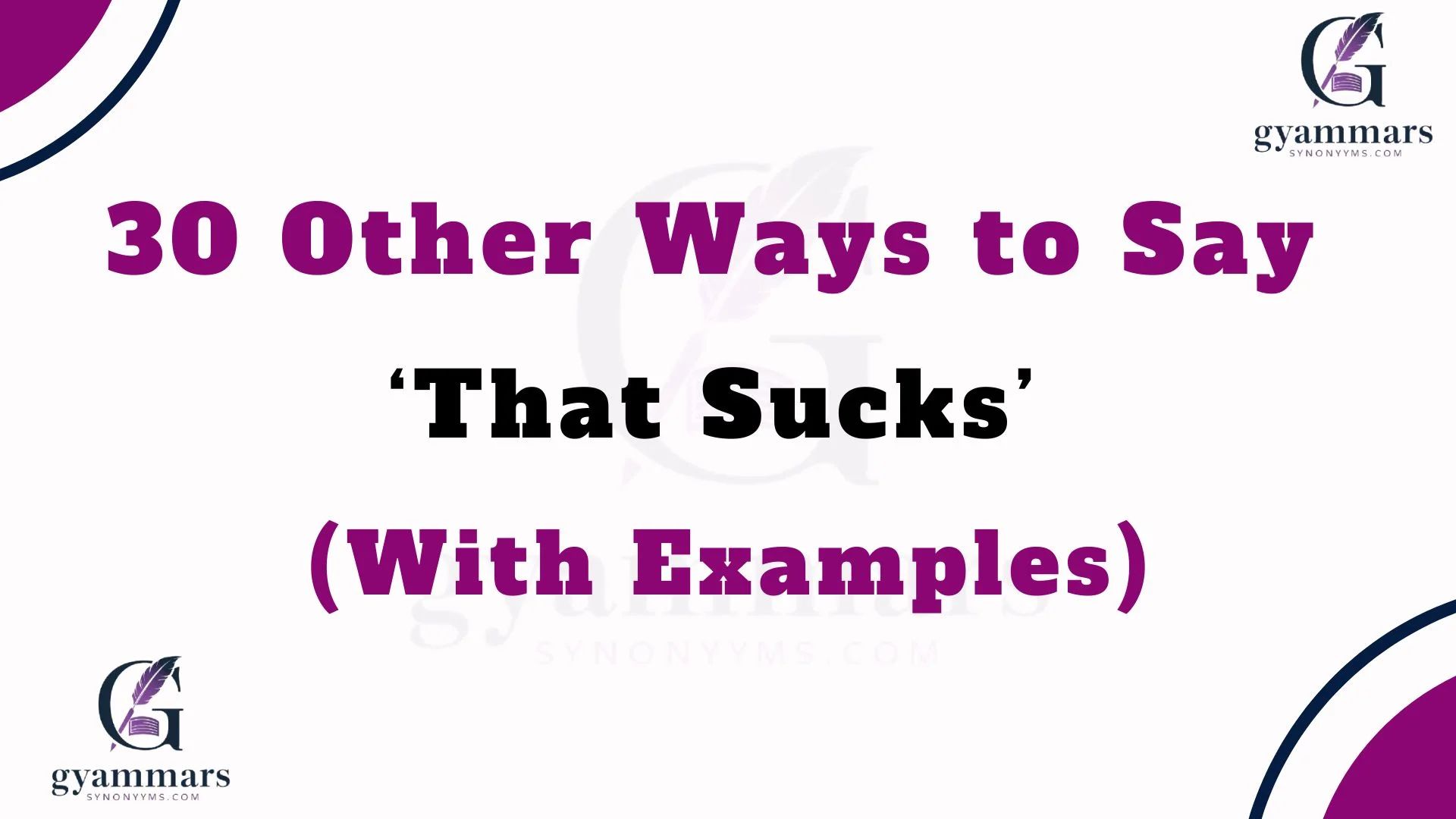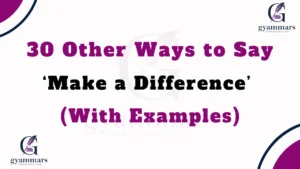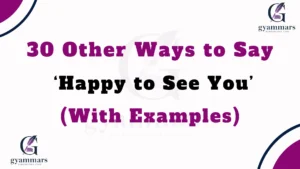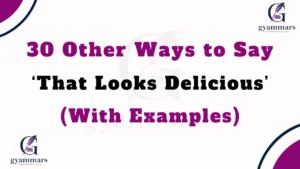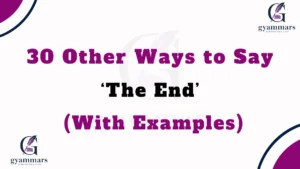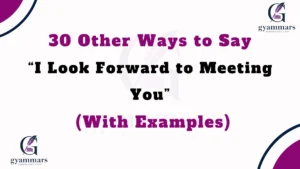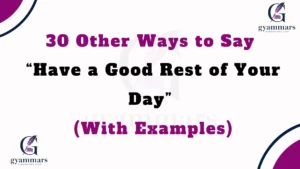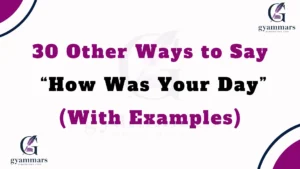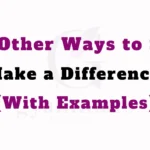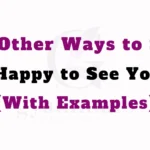When someone shares something upsetting, disappointing, or unfair, it’s natural to want to respond with empathy and care. Many people instinctively say, “That sucks,” but sometimes you may want to find other words that feel more thoughtful, supportive, or professional. Whether you’re talking to a friend, coworker, or loved one, having alternative phrases can help your response feel more personal, warm, and meaningful.
This article explores 30 other ways to say “That sucks,” with examples and guidance on when and how to use each.
What Does “That Sucks” Mean?
The phrase “That sucks” is a casual way to express sympathy or frustration about someone else’s misfortune. It shows that you understand their situation is unpleasant or unfair. However, it can sometimes sound too informal, dismissive, or vague, depending on the context.
Is It Professional/Polite to Say “That Sucks”?
In casual conversations, “That sucks” is acceptable, but in professional, formal, or sensitive situations, it may feel too blunt or unpolished. Using a more empathetic or supportive alternative can leave a better impression and strengthen relationships.
Pros or Cons of Saying “That Sucks”
Pros:
- Quick and easy way to show understanding.
- Feels relatable and conversational.
- Commonly used in informal settings.
Cons:
- May sound dismissive or lacking depth.
- Not suitable for professional conversations.
- Could minimize someone’s feelings if used casually in a serious situation.
Synonyms For ‘That Sucks’
- That’s Rough
- That’s Unfortunate
- I’m Sorry to Hear That
- That Must Be Hard
- That’s a Tough Break
- I Can See Why You’re Upset
- That’s Disappointing
- That Sounds Awful
- That’s a Shame
- That’s Too Bad
- That Sounds Frustrating
- I Can Imagine That’s Hard
- That’s Really Tough
- I Feel for You
- That’s a Lot to Deal With
- That’s Pretty Harsh
- That’s Not Fair
- I Get Why You’re Bummed
- That’s a Letdown
- I Hate That for You
- That’s Disheartening
- That’s a Drag
- That’s Pretty Lousy
- That Sounds Challenging
- That’s Really Unlucky
- That’s Annoying
- That’s Discouraging
- That’s Hard to Swallow
- That’s Messed Up
- That’s Really Sad
1. That’s Rough
Definition: A simple phrase acknowledging someone’s difficulty.
Detailed Explanation: Less harsh than “that sucks” and still casual.
Scenario Example: “You’ve been working so hard, and now the project got delayed? That’s rough.”
Best Use: Friendly and informal settings.
Tone: Sympathetic, casual.
Additional Notes: Works well when you want to be supportive without sounding too strong.
2. That’s Unfortunate
Definition: A polite, neutral way of expressing sympathy.
Detailed Explanation: Slightly formal but still empathetic.
Scenario Example: “I heard your flight got canceled. That’s unfortunate.”
Best Use: Professional or polite conversations.
Tone: Respectful, empathetic.
Additional Notes: Safer for work emails or professional chats.
3. I’m Sorry to Hear That
Definition: Directly conveys empathy.
Detailed Explanation: A caring and supportive response.
Scenario Example: “You’ve been sick all week? I’m sorry to hear that.”
Best Use: Works in both personal and professional contexts.
Tone: Warm, compassionate.
Additional Notes: Adds a personal touch without being overly casual.
4. That Must Be Hard
Definition: Acknowledges the difficulty of someone’s experience.
Detailed Explanation: Focuses on validating their feelings.
Scenario Example: “Balancing school and work? That must be hard.”
Best Use: When you want to show deep empathy.
Tone: Understanding, caring.
Additional Notes: Encourages further sharing.
5. That’s a Tough Break
Definition: Recognizes something unlucky happened.
Detailed Explanation: Slightly old-fashioned but empathetic.
Scenario Example: “You missed the last train? That’s a tough break.”
Best Use: Casual conversations.
Tone: Light sympathy.
Additional Notes: Often used for smaller misfortunes.
6. I Can See Why You’re Upset
Definition: Shows understanding of someone’s feelings.
Detailed Explanation: Validates emotions instead of just events.
Scenario Example: “Your efforts weren’t recognized? I can see why you’re upset.”
Best Use: Personal conversations.
Tone: Supportive, empathetic.
Additional Notes: Encourages emotional openness.
7. That’s Disappointing
Definition: Acknowledges letdown.
Detailed Explanation: More formal than “that sucks.”
Scenario Example: “The meeting got canceled last minute? That’s disappointing.”
Best Use: Professional or polite discussions.
Tone: Neutral, empathetic.
Additional Notes: Good for work settings.
8. That Sounds Awful
Definition: Conveys strong empathy.
Detailed Explanation: Shows you’re emotionally invested.
Scenario Example: “You had to wait for hours in traffic? That sounds awful.”
Best Use: When you want to express strong support.
Tone: Caring, sympathetic.
Additional Notes: Works better in personal settings.
9. That’s a Shame
Definition: Expresses mild disappointment.
Detailed Explanation: Slightly old-fashioned but still useful.
Scenario Example: “You couldn’t make it to the event? That’s a shame.”
Best Use: Polite, lighter situations.
Tone: Gentle, empathetic.
Additional Notes: Softer than “that sucks.”
10. That’s Too Bad
Definition: A classic alternative to show sympathy.
Detailed Explanation: Widely used and acceptable in most contexts.
Scenario Example: “You lost your wallet? That’s too bad.”
Best Use: Informal or semi-formal conversations.
Tone: Neutral, kind.
Additional Notes: Less harsh sounding than “that sucks.”
11. That Sounds Frustrating
Definition: Recognizes irritation or inconvenience.
Detailed Explanation: This phrase shows you understand the annoyance of the situation, not just the event itself.
Scenario Example: “You’ve been waiting on hold for two hours? That sounds frustrating.”
Best Use: When someone is annoyed by delays or setbacks.
Tone: Empathetic, validating.
Additional Notes: Good for both casual and professional situations.
12. I Can Imagine That’s Hard
Definition: Acknowledges the difficulty someone faces.
Detailed Explanation: Shows active empathy by placing yourself in their shoes.
Scenario Example: “Caring for a newborn and working full-time? I can imagine that’s hard.”
Best Use: Supportive personal conversations.
Tone: Compassionate, thoughtful.
Additional Notes: Encourages the other person to share more.
Also Read This : 30 Other Ways to Say “I’m Proud of You” (With Examples)
13. That’s Really Tough
Definition: Emphasizes the seriousness of their struggle.
Detailed Explanation: Similar to “that’s rough,” but stronger and more validating.
Scenario Example: “You lost your job right before the holidays? That’s really tough.”
Best Use: For heavier situations requiring deep empathy.
Tone: Serious, heartfelt.
Additional Notes: Avoid in light or minor situations—it may sound exaggerated.
14. I Feel for You
Definition: Expresses personal empathy.
Detailed Explanation: Indicates you’re emotionally connecting with their struggle.
Scenario Example: “I know how hard you worked on that project, and it didn’t go through. I feel for you.”
Best Use: Personal conversations where emotional support is needed.
Tone: Warm, caring.
Additional Notes: More intimate than professional.
15. That’s a Lot to Deal With
Definition: Recognizes emotional or physical overwhelm.
Detailed Explanation: Validates the weight of their circumstances.
Scenario Example: “Between school, work, and family issues, that’s a lot to deal with.”
Best Use: When someone is overwhelmed by multiple challenges.
Tone: Supportive, validating.
Additional Notes: Opens the door for offering help.
16. That’s Pretty Harsh
Definition: Recognizes unfairness or cruelty.
Detailed Explanation: Used when someone is treated unfairly or criticized too harshly.
Scenario Example: “They gave you no warning before firing you? That’s pretty harsh.”
Best Use: In response to unjust or rude treatment.
Tone: Sympathetic, slightly judgmental of the unfairness.
Additional Notes: Good for showing you’re on their side.
17. That’s Not Fair
Definition: Points out injustice.
Detailed Explanation: Validates their feelings by acknowledging the situation isn’t deserved.
Scenario Example: “You did all the work, and they got the credit? That’s not fair.”
Best Use: When unfairness is clearly the issue.
Tone: Supportive, affirming.
Additional Notes: Helps people feel validated when wronged.
18. I Get Why You’re Bummed
Definition: A casual way of showing understanding.
Detailed Explanation: Acknowledges disappointment in an informal, friendly tone.
Scenario Example: “The concert got canceled? Yeah, I get why you’re bummed.”
Best Use: Light, informal conversations.
Tone: Relaxed, friendly.
Additional Notes: Avoid in serious situations—it may sound dismissive.
19. That’s a Letdown
Definition: Recognizes unmet expectations.
Detailed Explanation: Focuses on disappointment rather than frustration.
Scenario Example: “You were so excited for that dinner, and they canceled? That’s a letdown.”
Best Use: When someone feels disappointed.
Tone: Neutral, empathetic.
Additional Notes: Suitable for both personal and professional conversations.
20. I Hate That for You
Definition: Expresses strong sympathy.
Detailed Explanation: Popular in casual American English, this phrase shows genuine care.
Scenario Example: “You were really looking forward to that trip, and it got canceled? I hate that for you.”
Best Use: Close friendships or informal chats.
Tone: Warm, caring, casual.
Additional Notes: Can feel very personal but less formal.
21. That’s Disheartening
Definition: Expresses how something can drain hope or motivation.
Detailed Explanation: Used when someone feels let down after effort or hope.
Scenario Example: “You studied so hard and still didn’t pass? That’s disheartening.”
Best Use: Professional or personal conversations about setbacks.
Tone: Thoughtful, empathetic.
Additional Notes: More formal than “that sucks,” works well in supportive discussions.
22. That’s a Drag
Definition: A casual way to say something is disappointing.
Detailed Explanation: More old-fashioned but still friendly in tone.
Scenario Example: “Your car broke down again? That’s a drag.”
Best Use: Informal, lighthearted chats.
Tone: Casual, sympathetic.
Additional Notes: Not ideal for serious or emotional issues.
Also Read This : 30 Other Ways to Say “I’m Proud of You” (With Examples)
23. That’s Pretty Lousy
Definition: A stronger alternative to “that’s bad.”
Detailed Explanation: Shows more emotional weight than “too bad” without sounding rude.
Scenario Example: “You didn’t get the promotion you deserved? That’s pretty lousy.”
Best Use: Informal situations where you want to show solidarity.
Tone: Supportive, casual.
Additional Notes: Has a friendly but validating feel.
24. That Sounds Challenging
Definition: Acknowledges difficulty without judgment.
Detailed Explanation: Highlights the demanding nature of someone’s situation.
Scenario Example: “Managing work and family responsibilities? That sounds challenging.”
Best Use: Professional or supportive settings.
Tone: Respectful, empathetic.
Additional Notes: Good when you want to recognize effort without pity.
25. That’s Really Unlucky
Definition: Recognizes bad luck or misfortune.
Detailed Explanation: Shows that circumstances were out of their control.
Scenario Example: “You spilled coffee right before the meeting? That’s really unlucky.”
Best Use: Casual or semi-formal conversations.
Tone: Sympathetic, light.
Additional Notes: Works best for smaller misfortunes.
26. That’s Annoying
Definition: Validates irritation at a minor inconvenience.
Detailed Explanation: Direct and relatable, often used for everyday frustrations.
Scenario Example: “They rescheduled the appointment again? That’s annoying.”
Best Use: Light situations, not serious hardships.
Tone: Casual, understanding.
Additional Notes: Better for smaller frustrations than big struggles.
27. That’s Discouraging
Definition: Acknowledges loss of motivation or energy.
Detailed Explanation: Helps someone feel seen when they’re demotivated.
Scenario Example: “You’ve applied to so many jobs with no response? That’s discouraging.”
Best Use: Professional or personal encouragement conversations.
Tone: Supportive, empathetic.
Additional Notes: Good segue into offering encouragement.
28. That’s Hard to Swallow
Definition: Recognizes difficulty accepting a situation.
Detailed Explanation: Suggests the person is facing something emotionally tough.
Scenario Example: “You didn’t get the scholarship even though you qualified? That’s hard to swallow.”
Best Use: For disappointing but significant situations.
Tone: Empathetic, serious.
Additional Notes: Stronger phrasing—use thoughtfully.
29. That’s Messed Up
Definition: Calls out unfair or unjust treatment.
Detailed Explanation: Strongly supports the person by condemning the situation.
Scenario Example: “They blamed you for their mistake? That’s messed up.”
Best Use: Informal settings, when you want to show loyalty.
Tone: Firm, sympathetic.
Additional Notes: More casual, not suitable for professional contexts.
30. That’s Really Sad
Definition: Expresses sorrow or emotional empathy.
Detailed Explanation: Directly acknowledges sadness in a respectful way.
Scenario Example: “Your friend had to move away? That’s really sad.”
Best Use: For heartfelt or emotional topics.
Tone: Gentle, compassionate.
Additional Notes: Works in both personal and professional settings when sensitivity is needed.
Conclusion
Words matter. Instead of relying on the casual phrase “that sucks,” you now have 30 thoughtful alternatives that range from casual to professional and from light sympathy to deep empathy. Choosing the right phrase not only shows that you’re listening but also makes the other person feel understood, validated, and supported.
Next time someone shares something difficult, use these expressions to make your response feel more genuine and compassionate.

“Emma Rose at Grammar Synonyms is your go-to expert for everything related to language and expression. Whether you’re refining your grammar, searching for the perfect synonym, or looking for creative ways to improve your writing, Emma Rose provides the tools and inspiration you need. With a wide range of resources designed to elevate your communication, Grammar Synonyms helps you find just the right words to make every sentence shine.
